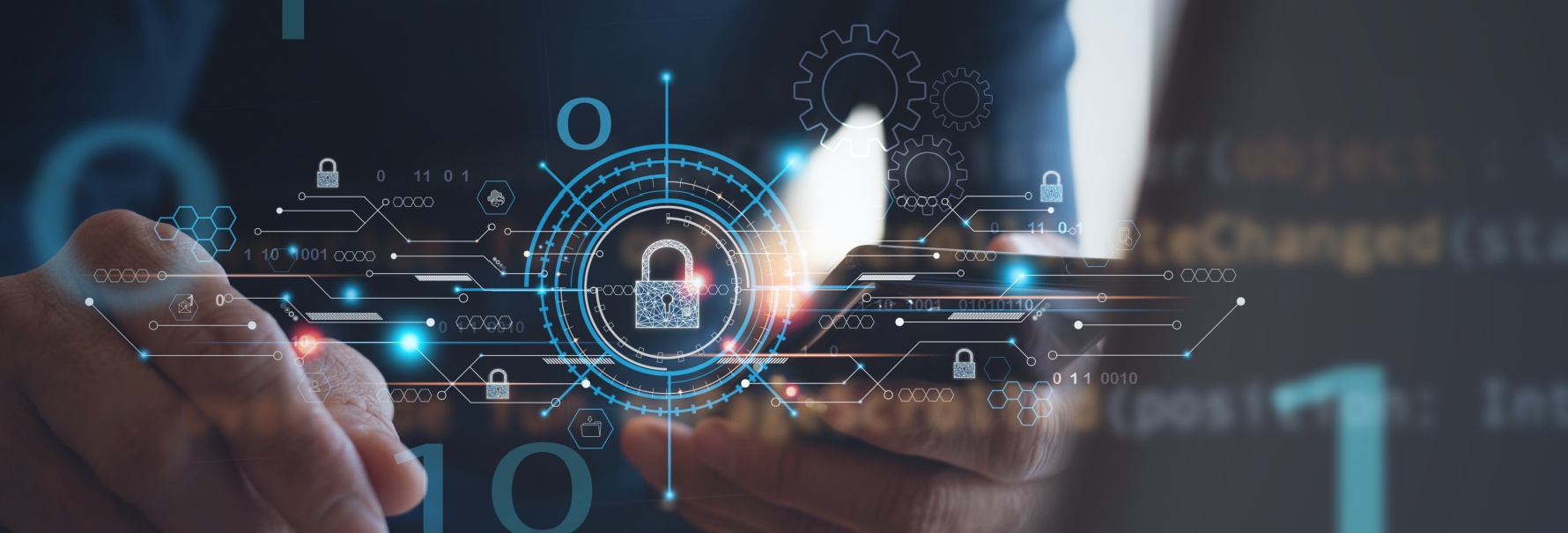Internet of Things - Safe or Not?
2024-01-26
The Internet of Things (IoT) has brought about a new level of connectivity, augmenting everyday objects with modern computer power and revolutionizing the way we live and work. From smart homes and wearable technologies to industrial applications, IoT devices have become commonplace in the lives of many, providing new conveniences and more efficient living. However, IoT technology has been rocked by scandals and cybercrime campaigns in the past, leaving a bad taste in the mouths of those affected. We have already explored this argument in an article back in 2022, but what is the state of this technology today - is a smart fridge a smart choice, or would you be inviting a vulnerability into your home? In this article we attempt to provide a rundown on the security of IoT devices.
A Brief History of IoT Cyber Attacks
The emergence and popularity of IoT devices has not been without its challenges. In recent years, bad actors have exploited vulnerabilities in these devices, raising concerns about the security of the IoT ecosystem. Instances of weak authentication, poor encryption, and the absence of software updates have left many devices susceptible to attack.
One of the most notorious examples of IoT security breaches is the Mirai botnet attack in 2016. Mirai exploited security weaknesses in a range of IoT devices, from home routers to webcams. The attackers harnessed this botnet to launch large-scale distributed denial-of-service (DDoS) attacks, disrupting major websites and online services globally. The magnitude of the Mirai attack shed light on the lax security practices prevalent in many IoT devices at the time, illustrating the potential for connected devices to be weaponized for widespread disruption.
Following the Mirai incident, the Dyn DDoS attack occurred later in 2016. This attack targeted Dyn, a major DNS provider, using a botnet composed of compromised IoT devices to overwhelm Dyn's servers. The result was widespread internet outages, highlighting the impact of IoT-related vulnerabilities on critical internet infrastructure.
In 2017, the WannaCry ransomware attack demonstrated the broader implications of IoT security. While not exclusively an IoT attack, it showcased how ransomware could affect IoT devices, including medical devices and industrial systems. This attack exploited a Windows vulnerability and still affects devices today, emphasizing the importance of updating software across all connected devices to prevent such incidents from occurring and reoccurring.
In 2018, the VPNFilter malware targeted routers and network-attached storage (NAS) devices. This malware had the capability to spy on traffic, steal sensitive data, and render devices unusable. The attack was attributed to a state-sponsored group, and the incident underscored the geopolitical implications of IoT security breaches, not just in terms of the protection of consumers, but also national security.
Beyond these high-profile incidents, numerous examples have highlighted vulnerabilities in specific types of IoT devices. Security cameras have been a frequent target, with attackers gaining unauthorized access due to weak or default passwords. These breaches not only compromise user privacy but also underscore the critical need for secure authentication practices in consumer IoT devices. Additionally, smart home devices such as doorbells and thermostats have also faced vulnerabilities and exploitations, emphasizing the importance of regular software updates for domestic IoT appliances.
Advances in IoT Security
Recognizing the vulnerabilities inherent in IoT devices, significant strides have been made to enhance their security in recent years. Manufacturers and industry stakeholders have responded to the challenges posed by cyber threats, implementing measures to fortify the security of IoT devices. Key advancements include:
1. Improved Authentication Mechanisms: The importance of robust authentication has been emphasized, and passwords must now satisfy several criteria in order to classify as strong enough to withstand a bruteforce attempt, as well as the integration of multi-factor authentication techniques in connected IoT devices.
2. Encryption for Data Security: Acknowledging the sensitivity of data transmitted by IoT devices, there has been a concerted effort to establish and improve the encryption of this data. End-to-end encryption ensures that data remains secure during transmission, shielding it from potential interception by malicious actors. Today, the majority of IoT traffic is now encrypted.
3. Regular Software Updates: To address firmware and software vulnerabilities, manufacturers now provide regular updates, where previously IoT devices did not enjoy updates so regularly. These updates serve to patch security flaws and improve the overall resilience of IoT devices. Simultaneously, users are encouraged to apply these updates promptly to maintain the security of their devices.
4. Industry Standards and Regulations: The IoT industry has recognized the necessity for standardized security measures. The adoption of industry-wide security standards and guidelines, coupled with the establishment of regulations by governments and industry bodies, has played a pivotal role in enhancing the security posture of IoT devices.
5. Integration of Blockchain Technology: Blockchain, with its decentralized and tamper-resistant characteristics, is being explored as a potential solution to enhance IoT security. Its application ensures secure communication between devices and maintains the integrity of transmitted data.
The Verdict: Safe or Not?
Across the timeline of IoT technology, the journey from vulnerability to security is evident. While cyber threats continue to evolve, and in cases remain prevalent, the concerted efforts of manufacturers, regulatory bodies and consumers themselves are contributing to a more secure IoT environment. The lessons learned from past cyber-attacks have built a commitment amongst IoT stakeholders to continuous improvement, emphasizing the importance of collaboration and shared responsibility. And while the industry is moving to improve security in these devices on the whole, the network administrator can also practice safe networking and good cyber hygiene by properly securing the IoT devices on their network, ensuring that they purchase products with modern security features, and might even consider placing their IoT devices on a different subnet.
Overall, IoT devices are the safest and most secure that they have ever been, so long as they are set up properly, meet industry regulations and include relevant modern safety features such as multi-factor authentication and encryption.
Sources
https://www.cloudflare.com/learning/ddos/glossary/mirai-botnet/
https://www.whiteblueocean.com/glossary/
https://www.iotworldtoday.com/security/wannacry-aftermath-is-iot-ransomware-in-our-future-
https://symantec-enterprise-blogs.security.com/blogs/threat-intelligence/vpnfilter-iot-malware
https://innovationatwork.ieee.org/blockchain-iot-security/
https://securityboulevard.com/2023/10/zscaler-report-surfaces-spike-in-iot-cyberattacks/
The information contained in this article is provided for informational purposes only and does not constitute professional advice and is not guaranteed to be accurate, complete, reliable, current or error-free.

Related news

The risks of Internet of Things
2022-03-25The growing number of Internet of Things devices, set to reach 30 billion in 2025, offers many advantages, but also raises concerns over the possibility of cybersecurity risks. Read more about IoT vulnerabilities.
Read more
Malvertising
2024-03-08Advertising permeates every online interaction in our digital society. This ubiquitous presence has led to a new cyber threat, malvertising, which attempts to inject malicious code into digital ads, often distributed by legitimate advertising networks, making it more challenging to detect.
Read more
Law Abiding Netizens: How Legislation Can Counter Cybercrime
2025-01-17Cybercrime threatens global economies, with losses expected to hit $10.5 trillion by 2025. This article explores how the EU leads the global fight against cybercrime threats through legislation like GDPR and DORA, setting global standards for data protection and cybersecurity.
Read more
Gazavat/Expiro Malware Spotted in Africa after Decade-Long Disappearance
2024-11-15Resurgent Expiro malware is spreading in Africa, leveraging advanced techniques to evade detection and steal sensitive data. Learn prevention and mitigation rules for consumers and business.
Read moreContacts
Let's talk
Please fill in the form below (fields with * are mandatory) and we will respond to your request as soon as possible!